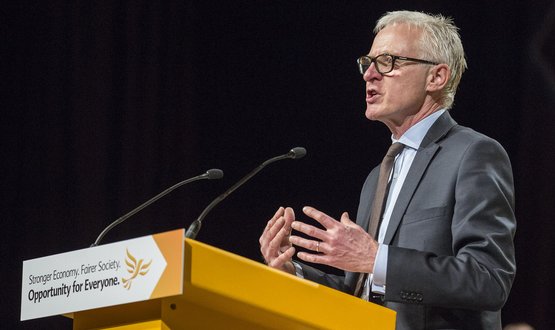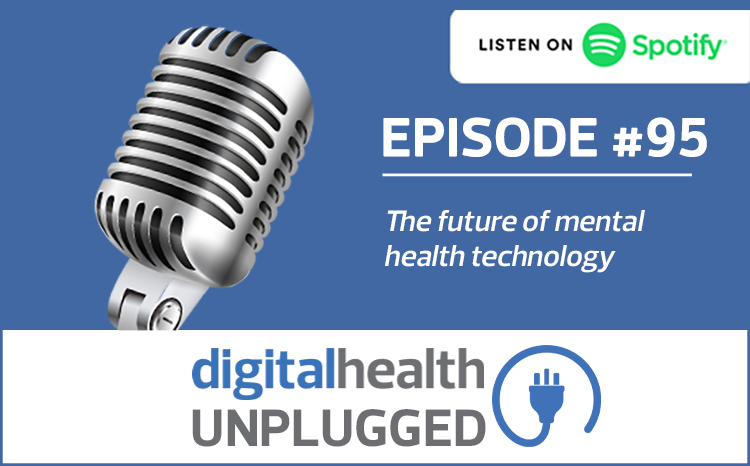Digital Health interview: Norman Lamb
- 23 November 2016

Former health minister Norman Lamb has worked tirelessly to raise the profile of mental health treatment in the NHS and forefront the use of technology.
With his eldest son diagnosed with obsessive compulsive disorder 12 years ago, the MP for North Norfolk has direct knowledge and experience of the “emotional turmoil” from being treated on the NHS.
As a care minister in the last, coalition government, he worked to forefront the “horribly neglected area” of mental health. And he has repeatedly said that he wants to put data at the heart of a better system.
Electronic patient records, interoperability and a focus on innovative technologies, were the three top priorities he set out at this year’s EHI Live 2016 audience.
However, when speaking to Digital Health News, he said he has “no faith” that the current government shares his vision in how to improve the treatment of mental health in this country.
“Been let down by the NHS”
At EHI Live, Lamb said his family had been “let down by the NHS”. After Archie was diagnosed at 16 with OCD, he said the family was told they would have to wait six months for treatment.
Lamb paid for the treatment himself and went private. But he is well aware that is not an option for many, so “people are left waiting for something that is wholly inadequate”.
Maximum waiting times
Waiting time targets were first introduced to the NHS in 2004. The highest profile target, the referral to treatment time or RTT target, says a patient has a right to start treatment or be seen by a specialist within 18 weeks of being referred by a GP.
Suspected cancer cases are seen much faster. However, mental health services have not been subject to the same kind of target setting.
The first standards for mental health were only introduced in April 2015, following a campaign by Lamb. The regulations had to be fully implemented by April this year, and were accompanied by an £80 million funding package from NHS England.
Lamb highlights the standard that says more than 50% of people going through their first episode of psychosis will be treated with a NICE-approved care package within two weeks of referral.
In Lincolnshire, this new regulation is being tackled by an online psychological family therapy service which allows the patient, clinicians and other family members to engage in family intervention via video link, regardless of geographical location.
Implementation “completely flawed”
While areas such as Lincolnshire may be taking an innovative approach, Lamb is damning about how the standard has been implemented across the board. At EHI Live he described it as “completely flawed”.
He pointed out that the information guidance that was simultaneously released with the new standards says that trusts should use an electronic patient record to check their performance and make sure that patients are getting timely access.
Yet he told the show in Birmingham that EPR in many areas is “simply not happening”. Without this, he added, trusts “cannot properly record whether they’re meeting the two-week standard or whether they’re accessing clinical based treatments.”
In addition, he said, a lack of interoperability between systems means that patients have to repeat themselves to different care teams; something that is particularly distressing for mental health patients.
Will the government fund EPRs in mental health?
With the NHS distracted by an immediate financial crisis and the huge amount of work involved in getting together sustainability and transformation plans, it is perhaps not surprising that investment in mental health IT has not been everybody’s top priority.
Yet Lamb points out this kind of thinking will, ultimately, get the NHS nowhere. “You need to take a long view on this, and that means the government has to be willing to recognise the case for upfront investment.”
In any case, he regards the economic and social benefits of investment in technology as undeniable. He argued that when early intervention in psychosis is facilitated by an EPR, the return on investment is about £15 for every £1 spent over a ten-year period.
There’s also the moral case, as he wrote in a statement prior to EHI Live: “If you can rescue that person and give them the chance of a good life then you’ve got the chance of that person being employed, not claiming benefits, and paying their taxes.”
However, Lamb doesn’t have any faith that the government gets his view: “To imagine that you can maintain a system and indeed modernise it, whilst at the same time spending a reducing percentage of your national income is irrational.”
“Enormous potential” in technology innovations
More has been happening in the field of digital patient services. A report on the mental health five year forward view from the independent Mental Health Taskforce, published February, discusses the “pivotal role” for digital technology in the sector with the example given of NHS Choices. The website has now been revamped as NHS.uk.
Mental health apps are the first category of apps to be given attention, following the collapse of the first NHS Apps Library. Last month, NHS England also announced it was looking for six to eight mental health innovators to share a £400,000 fund to speed up the adoption of their products by the health service.
Lamb feels there is “enormous potential” in technologies such as apps for helping people to self-care, monitor their condition and know when to seek help. It’s just that doesn’t negate the need for investment in IT to help NHS institutions do their job better.
Is there enough money for innovation?
Mental health costs the economy £105 billion a year, with one in four adults experiencing at least one diagnosable mental health problem annually.
The ‘Five Year Forward View’, drawn up to try and close a gap between NHS funding, demand and costs that could otherwise reach £30 billion by 2020-21, emphasises the need for a renewed effort on prevention, to try and prevent some of these kinds of costs.
It also puts a big emphasis on new models of care to create more integrated services and keep care as close to home as possible. The STPs that are coming through devote large sections to mental health.
Yet Lamb concedes that innovators are still operating in a climate of huge financial difficulty, so without real and sustained commitment these ideas are unlikely to be fulfilled.
“When the health system is on its knees – and it faces an existential challenge – investing in new ways of doing things, where we increase the focus on preventative care, where we help people prevent a deterioration of their condition; that’s the direction we should be going in,” he says. “The government should be as ambitious as possible in supporting that.”





